Mexico’s Produce: Forging Ahead
January 1, 2018 | 13 min to read
In the evolving landscape of U.S.-Mexico trade, companies like Divine Flavor have significantly increased agricultural exports, now providing around 15 percent of table grapes to the U.S. market. With Mexico exporting US$24.87 billion in agricultural products in 2016, innovation and diverse sourcing are key. As U.S. consumers prioritize availability, Mexico's protected agriculture enhances reliability and quality. Additionally, growth in organic production and sustainability initiatives further solidify Mexico's vital role in satisfying U.S. demand for a wide variety of produce.
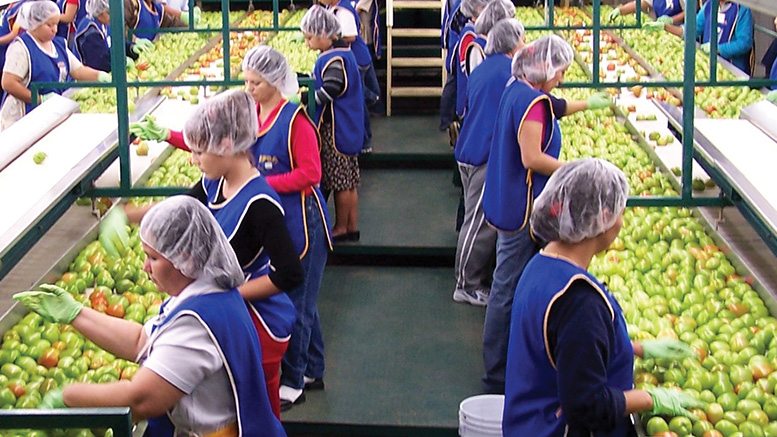
Originally printed in the January 2018 issue of Produce Business.
Increasing variety and value-oriented options shape the future of U.S. neighbor’s exportable offer.
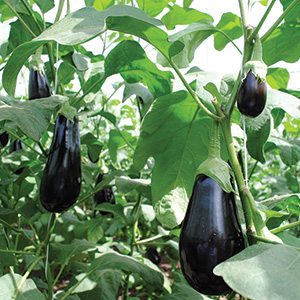 In 1989, Grupo Alta of Hermosillo, Sonora, Mexico, began farming 10 hectares of table grapes in Mexico. More than 25 years later, the company now farms 1,500 hectares, is one of the leaders in the table grape business in Mexico and is vertically integrated, having formed distributing company Divine Flavor in Nogales, AZ. “We probably represent 15 percent of the total table grape volume Mexico exports to the United States,” says Pedro Batiz, Divine Flavor’s vice president of sales in San Diego. “We produce 22 products, including fruits, melons, peppers and tomatoes, in four different states in Mexico: Jalisco, Sinaloa, Sonora and Baja California.”
In 1989, Grupo Alta of Hermosillo, Sonora, Mexico, began farming 10 hectares of table grapes in Mexico. More than 25 years later, the company now farms 1,500 hectares, is one of the leaders in the table grape business in Mexico and is vertically integrated, having formed distributing company Divine Flavor in Nogales, AZ. “We probably represent 15 percent of the total table grape volume Mexico exports to the United States,” says Pedro Batiz, Divine Flavor’s vice president of sales in San Diego. “We produce 22 products, including fruits, melons, peppers and tomatoes, in four different states in Mexico: Jalisco, Sinaloa, Sonora and Baja California.”
Divine Flavor is one of many examples of the growth and evolution that has occurred in the Mexican produce industry over the past two decades.
“Divine Flavor has been both innovative and creative in all aspects of its business,” says Alfonso Cano, produce director at 42-store Northgate Gonzalez Markets headquartered in Anaheim, CA. “From seed to sales, their team is aligned to execute and deliver a high level of consistent service and quality produce.”
Other importers, such as SunFed in Rio Rico, AZ, constantly work on cycles of continuous improvement. “We analyze what went well and what didn’t from the previous season and what opportunities we have to improve upon our promise of delivering perfect produce,” says Matt Mandel, vice president of operations.
Current export statistics reflect Mexico’s innovation and growth. In 2016, Mexico exported US$24.87 billion of agricultural products to the United States, with vegetables accounting for 25 percent and fruit accounting for 24 percent of that value, according to statistics from SAGARPA (Mexico’s Secretariat of Agriculture in Mexico City). SAGARPA statistics list leading produce items such as tomatoes, avocados, peppers, berries (blue and black), strawberries, cucumbers, limes, lemons, grapes and asparagus.
Business continues to grow despite the negative sound bites in the news regarding U.S.-Mexico trade politics.
“Produce companies continue to do more business with Mexico, regardless of the political rhetoric,” says Cano. “Most consumers don’t really care where the product comes from. It comes down to availability and guarantee of supply.”
“U.S. consumers are used to getting whatever they want, whenever they want it.”
— Alfonso Cano, Northgate Gonzalez Markets
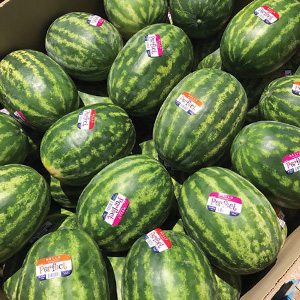 Mike Melendrez, produce manager with Food King, which is headquartered in Littlefield, TX, and operates 18 stores, reports Mexico’s wide production area and variety benefit retailers with ample supply options. “When the U.S. seasons stop, Mexico producers are crucial players,” he says. “Without Mexico’s offering, we would have significant gaps in crucial products.”
Mike Melendrez, produce manager with Food King, which is headquartered in Littlefield, TX, and operates 18 stores, reports Mexico’s wide production area and variety benefit retailers with ample supply options. “When the U.S. seasons stop, Mexico producers are crucial players,” he says. “Without Mexico’s offering, we would have significant gaps in crucial products.”
Industry members say Mexico’s innovative growers have even more to offer in the future in terms of variety, value-added, organic and sustainability.
“Our mission is to challenge the status quo and to try to make a difference in all we do to satisfy the U.S. consumer and exceed market expectations,” says Batiz.
For Cano, Mexico’s production alternatives remain a valuable resource. “U.S. consumers are used to getting whatever they want, whenever they want it,” he says. “Mexico is a key alternative supplier to fulfill these demands. Mexican growers and shippers have worked hard to earn the business, to keep it and to make it better.”
Looking For More Options
Mexico’s future is increasingly fashioned on offering diversity in sourcing.
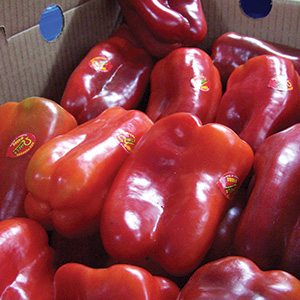 “The diversity of climates and micro-climes allows for a wide array of product to be grown on a year-round basis during several times when the United States simply can’t produce at the same level,” says Mandel. “Mexico complements other growing areas when it comes to susceptibility of pests or climatological pressures. When one area is hurt, the other ensures there is still product available. It is important to have a diversified production base to ensure there are as few gaps in supply as possible.”
“The diversity of climates and micro-climes allows for a wide array of product to be grown on a year-round basis during several times when the United States simply can’t produce at the same level,” says Mandel. “Mexico complements other growing areas when it comes to susceptibility of pests or climatological pressures. When one area is hurt, the other ensures there is still product available. It is important to have a diversified production base to ensure there are as few gaps in supply as possible.”
In addition to diversifying production areas for surety of supply, Mexico continues to offer greater product variety. Christopher Ciruli, chief operating officer at Ciruli Brothers in Rio Rico, AZ, reports buyers can expect an increasingly wider variety of mixed vegetable products. “Those items will be available longer, well into the summer months, too,” he says. “This will allow for fewer breaks in shipments and more continuity of supplies.”
Northgate’s Cano says development in berries continues on an upward path. “The strawberry business gets stronger every year. Berries are becoming more shipping-friendly and handle better. We are expecting to see berries an extra two to three months a year.”
Bananas out of Mexico also are gaining in popularity, according to Cano. “Bananas from Mexico have become very consistent and a good value,” he says.” They are competitive in pricing. We sell a lot of them.”
Mexico is undergoing strengthening demand for lesser-known, but interesting items.
“We see an increase of products appealing to more ethnic demographics hitting shelves,” says Ciruli. “These include guava, jackfruit, different hot pepper varieties and Indian (baby) eggplant, to name a few.”
Agroproductores Coras in Tepic, Nayarit, Mexico, has been exporting jicama for 15 years. “U.S. demand for this product is strong and increasing,” says Jesus Montero, owner. “We have also been exporting jackfruit for four years now and see good opportunity with it.”
Mexico also offers lesser-known options in citrus. Flavor King in Rio Rico, AZ, looks to promote its Valencia oranges and more common lemons and limes. “The Sonoran orange is not as well-known, but it’s a great product,” says Enrique Gracia Parada, president. “And, our product does not have to be fumigated or undergo cold treatment to enter the United States.”
Herbs represent another growing category. Siga Logistics in Morelos, Mexico, exports a wide variety of herbs. “We have 10 different products and handle the growing, packing and exporting,” says Mia Gonzalez, sales manager. “We offer both conventional and USDA-certified organic.”
Increasing investment by growers in varietal research and development aims to keep Mexico on the cutting edge. Divine Flavor currently has about 25 agreements with universities, flavor institutions and governments to develop seeds. “We have a lot of new materials in development,” says Batiz. “We have about five different varieties with differentiated flavors the market will soon see. One of our most exciting is a Gummy Berries grape, which we expect to be a great product to market to kids.”
Increasing options also apply to how importers and distributors are widening their product mix. Distributors, such as Don Limón America in Doral, FL, which is known for Mexican limes, also are handling mangos, pineapples and berries. “It’s increasingly common for a buyer to look to source multiple products from the same importer because of convenience, reliability and trust,” says Eric Rosales, international trader with Don Limón.
Adding Options
 Mexico not only sets its sights on diversifying commodity product mix, but also in moving more toward adding value with packaging.
Mexico not only sets its sights on diversifying commodity product mix, but also in moving more toward adding value with packaging.
“We want to become a leader in value-added products,” says Raul Urteaga Trani, general coordinator for international affairs with SAGARPA.
Retailers such as Northgate Gonzalez utilize increasing packaging options, including those in cilantro and green onions. “This cuts into the labor of the retail store,” says Cano. “We don’t have to trim the ends of green onions anymore. It’s also easier to scan and rotate. Consumers are being conditioned to buy packaged produce, and that is the direction it will continue to go. The biggest driver for packaged produce is the reduction in retail labor. The grower-shipper-packer is becoming an extended labor force for the retailer.”
Ciruli Brothers’ Ciruli sees increasing retail demand for products relaying more value to the end consumer. “This trend is going to continue with more products being packed in bags or clamshells out of Mexico,” he says. “Part of the demand on the retail side is driven by a buyer’s ability to try different SKUs and merchandise product in a way that generates increased revenue and reduces shrink.”
Food King’s Melendrez agrees demand for prepacked items, such as in net or plastic bags, will increase. “Key limes, for example, are mainly sold in bags now,” he says. “Club store packs are also something with potential. Smaller retailers may not benefit from those, but bigger ones do.”
In response, Ciruli offers several specialty packs. “Our consumer packs include clamshells for our Champagne mangos, club-size mango cases with recipes and consumer information, and most recently, we are expanding our bagged vegetable program,” says Ciruli. “We’re revamping our R&D efforts to realign our packaging to what our customers need.”
This past year saw the launch of SunFed’s Almost Famous packaged goods line, reportedly experiencing great reception among its customers. “Packaging what might be otherwise deemed ‘cosmetically challenged’ produce is a way to make fruit and vegetables affordable, fun and ensure less food waste,” says Mandel.
Take Advantage of Protection
Mexico’s protected agriculture production methods have revolutionized many produce categories, and the trend is forecast to continue. SAGARPA’s Urteaga Trani reports Mexico has distinguished itself as one of the leading countries of protected ag production. “We have thousands of acres dedicated to this,” he says.
According to SAGARPA statistics, Mexico reported production of 40,862 hectares (100,972 acres) in protected agriculture. “In terms of products, 62 percent of this production is dedicated to vegetables,” says Alfredo Diaz Belmontes, chief executive of AMHPAC (the Mexican protected ag growers association) in Culiacan, Sinaloa, Mexico. “Fruit accounts for another 33 percent, and 5 percent is in flowers and other plants.”
The pull of protected ag is all about reliability, says Cano. “It’s about what we order, what we get and what it looks like,” he says. “Mexico has done a good job of controlling the production environment and guaranteeing delivery. For example, tomatoes are a high-volume item, and protected ag gives us a wide variety of consistent product.”
Diaz Belmontes observes the past 17 years have witnessed incredible growth because of consumers responding to what Mexico offers. “Protected agriculture allows consumers to have good product year-round and has helped stabilize prices,” he says.
Protected ag’s worth is rooted in its value proposition, according to Food King’s Melendrez. “For example, protected ag tomatoes have resulted in a category with great volume and variety,” he says. “The produce looks great and is more economical. Such results are good for the economy on both sides of the border.”
Oscar Woltman, president of AMHPAC, points out protected ag envelops all emerging consumer trends. “Our production systems reduce water use or even recycle water, reduce chemical use and are more energy efficient,” he says. “The productivity per square meter is increased by a factor of four to six. Land is utilized much better.”
Mainstream Organic
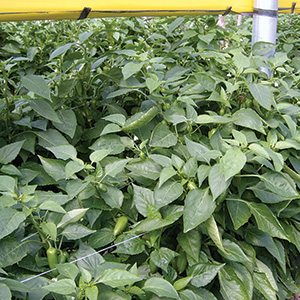 Just as Mexico impacted the greenhouse sector, its next frontier of significant development may well be organic.
Just as Mexico impacted the greenhouse sector, its next frontier of significant development may well be organic.
“We are moving rapidly into organic production,” says SAGARPA’S Urteaga Trani. “We are negotiating with the United States and Canada for joint protocols for organics. Right now, everyone sees the big difference in price between what is labeled organic versus conventional. Mexico’s increasing organic production can bring down prices for consumers as we make more organic offering available.”
As a category in Mexican production, organic development has not slowed.
“Many of the producers are still salt-of-the-earth, smaller farmers, so ensuring a steady supply remains a challenge,” says Mandel. “But, companies such as SunFed bring many of those producers together, allowing for redundancy of supply and the ability to take care of customers’ needs on a regular basis.”
Ciruli Brothers’ Curuli reports organic expansion continues across different commodities, including mangos, tomatoes and peppers, with supportive retail demand as well. “The data I’ve seen shows while the number of organic items exported from Mexico to the United States is increasing, those exports are growing faster than U.S. retail demand for those items,” he says.
Many of Mexico’s foremost growers and shippers continue to develop organic production with an eye toward taking advantage of the growing market. Organics Unlimited, which ships organic bananas out of Mexico, reports increased acreage in organic banana production. “We currently ship about 48 to 50 containers a week in organic bananas and a small volume of organic coconuts, too,” says Myra Velasquez de Leon, president and chief executive of the San Diego-based company. “We anticipate more exportable volume to continue to meet the demand being requested.”
AMHPAC lists having approximately 5 percent of its protected ag in organic products currently, but is looking toward future expansion. “There is great opportunity for growth in this area,” says Diaz Belmontes. “Organic demand will continue to grow, and our government is supporting development in this area.”
Flavor King reports approximately 50 percent of its production is in organic product. “Organics represents a very viable market, and we will continue to take advantage of it,” says Gracia Parada.
A Compelling Story
Hand-in-hand with organic comes sustainability and social responsibility. According to SunFed’s Mandel, sustainability has been a cornerstone of Mexican agriculture for some time. “A significant portion of Mexican agriculture is grown indoors in a protected environment, which helps protect the crops from climatological and pest pressures,” he says. “Growing in this manner typically makes a crop more sustainable in that fewer chemical applications need to be applied, yielding higher-quality fruit; simply put: fewer inputs and better outputs.”
As consumers demand greater transparency and knowledge of food sources, Mexico’s growers and exporters look to work with buyers to promote their cause.
“More and more U.S. retailers are looking for partners promoting sustainability,” says Divine Flavor’s Batiz. “We are really championing this in Mexico and host many retail buyers who want to come see the difference we’re making. Our website provides a direct link to educate consumers. By being transparent with the consumer and telling our story, it makes a difference for our retailers and partners.”
“More and more U.S. retailers are looking for partners promoting sustainability. We are really championing this in Mexico.”
— Pedro Batiz, Divine Flavor
Velasquez de Leon reports Organics Unlimited, with its GROW Foundation program, continues new branding to reach out more to consumers, as well as retailers and distributors. “We have developed impactful messaging focused on consumers and expanded what we’re doing with social media,” she says. “Our retail customers can use digital tools to reach their customers. For example, we have an area on our website where stores can go to glean information to use in their own POP development.”
Organics Unlimited also is undertaking an innovative bus outreach to consumers in selected markets where the company has high distribution. “GROW bus-side signs are currently on transit in Portland, OR,” says Velasquez de Leon. “We aim to raise consumer awareness through this promotion.”
Ciruli continues to push sustainability and fair trade-type programs with its partners. “We aim to build partnerships with retailers willing to pay a premium for certified items so growers can see a positive return for their efforts,” says Ciruli. “Part of our Champagne and Kent mango crop, as well as our green beans and part of our bell pepper crop, have been certified with Rainforest Alliance for a few years. In Central Mexico, we have also certified vegetable items, including bell pepper, eggplant, cucumbers and some squash.
Ties That Bind
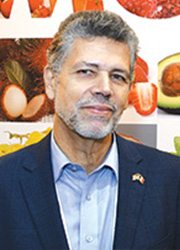
Raul Urteaga Trani
An interview with Raul Urteaga Trani, general coordinator for international affairs with SAGARPA (Mexico’s Secretariat of Agriculture) in Mexico City about the intricate U.S.-Mexico trade relationship and his vision of the future.
Q: The United States and Mexico have been linked in trade for decades, but how does our trade relationship continue to bind us together?
A: Exports of fruits and vegetables from Mexico to the United States have surpassed US$12 billion per year. This is important because this volume of production supports hundreds of thousands of jobs in Mexico and contributes to overall economic development. On the U.S. side, prior to NAFTA, American consumers didn’t have options to buy affordable fresh fruits and vegetables year-round. Via NAFTA, Mexico has been able to produce and ship year-round to the benefit of U.S. consumers. This benefit cannot be lost in the discussion because consumers demand variety and options that must be taken into account. If we are going to disrupt the gains we have acquired over the past two decades, everyone will lose. The first casualty will be consumers.
Q: And is there a pending loss of U.S. exports to Mexico, as well, if these ties are severed?
A: Yes. Mexico is a crucial export market for U.S. apples and pears. Mexico imports 28 percent of apples and 50 percent of pears exported from the United States to the world (212,000 and 67,000 tons, respectively). In 2016, Mexico was the largest market for U.S. corn, pork and pork products, dairy products, poultry and poultry products, apples, rice, malt and pears. It is also the second-largest market for U.S. beef and beef products, soybeans, wheat and sorghum. That’s a lot of potential lost exports.
Q: How has U.S.-Mexico trade business evolved into more than just shipping over the border?
A: We have seen incredible investment in the produce industry on both sides of the border. You see U.S. businesses investing in Mexico, and you have Mexican businesses with operations in the United States. Beyond production, there are transportation and logistics companies involved, and a whole chain that supports agricultural trade. The partnerships between U.S. and Mexican businesses are crucial. They are investing together not only in production but also in R&D, and cooperating to ensure best practices in labor issues, compliance and food safety. All these factors present a picture favoring more cooperation, more collaboration and more trade and investment between our two countries.
Q: Can you give us a real-life example of this positive collaboration?
A: The berry industry is a great success story. A decade ago, there was little production of berries in Mexico and a real lack of berries in the U.S. market during certain times of the year. Now Mexico is one of the top five producers of berries worldwide. Though more than half of production is exported to the United States, Mexico is opening other markets. This sector has seen much cooperation, investment and support from U.S. companies. And U.S. consumers now have greater year-round access to safe and high-quality berries.
Q: Topics of sustainability and social responsibility are hot-button items with consumers right now. Will these issues be discussed or linked to trade going forward?
A: Up until now, we, as governments, have focused on ensuring the three NAFTA countries are in full compliance with each country’s own domestic labor laws. We are focusing on the important components of compliance, including social responsibility aspects entitling workers to protection in terms of health, education and working, and housing conditions. The production system of the North American region cannot leave this important concept behind because in the end, we are not just talking about the United States or Mexico complying with its own regulations, but rather we are looking at the competitiveness of the region as a whole.
Q: So despite the protectionist talk now, you foresee a future of cooperation?
A: Years from now, we will be talking about the North American region being the most competitive region in the world in terms of agricultural production. Together, we have the capacity to supply a large percentage of the food the world requires. Our region has unique advantages. For example, Canada and the United States are highly competitive in the production of grains. Mexico has become highly competitive in produce and livestock. Over the years, we have the opportunity to evolve as a region, with each country focusing on its strengths. The big challenge for us, as a region, will be how we compete in the next few years with Asia and Europe.
Q: Do you believe the harsh political trade talk will have any ramifications on actual trade?
A: The current rhetoric and threats coming out of Washington regarding NAFTA have propelled many Mexican producers to look for alternative markets, not only in terms of exporting, but also potential suppliers. As I mentioned, Mexico is the largest importer of U.S. yellow corn, wheat, soybean meal and rice. Countries in South America and other regions, particularly Argentina and Brazil, are keenly interested in becoming Mexico’s suppliers of these key grains. Last year, I visited Brazil and Argentina twice and was surprised to see the big possibilities there for a Plan B, in case things don’t pan out well with NAFTA.
15 of 20 article in Produce Business January 2018

